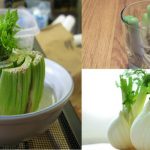No matter how long or short your experience with planting is, stay assured that you too can grow a blooming beauty in your dull garden patches. But for your flowers to do best, it helps to learn a few basics about how flowers live and what they need for that.
Sun is essential for any flower to get upright
Cultivating a flower takes a lot of zest on your part, but all its “energy” comes from the sun. So most flowering plants need a full-sun site — where sunlight lasts 6 to 8 hours a day, especially all through the growing season.
The secret of success in your garden is in its soil quality
Good soil — not too sandy, not too sticky, with enough organic material to make it drain well and be inviting to plant roots — is essential for a successful flower gardening, just as it is for all vegetables. After all, vegetables such as squash and tomatoes are formed from flowers.
Perennials and annuals
These are the 2 basic kinds of flowering plants as far as gardens are concerned.
Perennials are plants whose root systems stay alive underground for several years or even decades. The part above the soil may go dormant and die back in winter, but the plant is still alive and will sprout again in spring. The tradeoff for perennials’ long life is that they bloom for only a few weeks or months each year. Exactly when and how long varies between species.
Annuals go through their whole life cycle in only 1 growing season: sprouting from a seed, growing leaves and roots, producing flowers, creating seeds, and then dying. They are popular with gardeners and urban farmers alike because, with reasonable care, they bloom their heads off all season around.
Which variety is better?
Both have their uses in the garden. Comparing annual and perennial flowers is a little like comparing apples and oranges. Each type of flower has its own characteristics and advantages.
Perennials provide steady structure and form to a garden, and many gardeners delight in the anticipation of their favorites’ bloom time. Few are truly ‘plant-it-and-forget-it’, but they do tend to need less care than their annual counterparts.
Annuals are great for places where you want a lot of flowers, but they generally need more attention – watering, fertilizing and other care than perennials – so planting them every year can be quite a chore.
Long-term versus short-term flowers
Perennials, whether you buy them as seeds or plants, may take a year or more to get established and bloom in the garden, but the effort will pay off in years.
Annuals allow you to change the look of your garden every year. Even a garden with a backbone of perennial plants attracts attention with different annual accents each year.
Annuals are ‘invented’ for pots. In northern climates, annuals are best for color in containers. You can plant them in the spring and when frost comes in fall, they’re done. That’s a lot easier than trying to protect the living roots of a potted perennial through a cold winter. In climates where winter cold is not an issue, some perennials may live in pots for years. You can combine flowering annuals with perennials or foliage plants in a pot if they have compatible needs.
So, if you want flowers right now, annuals are the answer to your prayer. But it does not have to be an ‘either-or’ thing: there is no need to pick one or the other. Annuals and perennials can be combined in your planting design to reap the best of both!
Seeds or plants? Let’s take a look
Both annuals and perennials can be sown from seed directly in the garden, but it will take a while for them to sprout, develop and bloom — several weeks for annuals, up to a year for perennials. That’s why many gardeners start seeds indoors weeks before it is warm enough to plant them outside. Or you can buy plants already sprouted. It’s better to buy plants that aren’t in bloom yet, though. You want them to do their blooming in your garden, not in the greenhouse!
Labor cost: The price of annuals’ all-season bloom is that they need regular watering and fertilizing. That’s because producing all those flowers all season takes a lot of water and nutrients, as well as sunlight. You may also need to deadhead — pinch off dried-up blooms to encourage the plant to flower more. Perennials aren’t totally carefree — depending on the species and on your climate and soil, they also need some watering and fertilizer, but not as much attention as annuals. The perennials that tend to need the least maintenance are native plants — those that evolved in your area and thrived, until gardeners came, with no care at all.
In the shade: As a rule, the less sunlight you have, the fewer blooms you will get. When placed in too much shade, flowering plants may produce leaves but no blooms. Some species of annuals and perennials can bloom in less than 8 hours a day of sunlight, but you’ll have to seek them out. As always, when buying plants, read labels, seed packets or catalog descriptions cautiously.
Right plant in the right place: Often we fall for a flower on looks alone, regardless of whether we can give it what it needs. But you will have most success with both annuals and perennials if you first figure out what kind of site you have — how much sun, what kind of soil, how close to the hose, how much work you are willing to put in — and then look for a plant that fits in.
Here are 5 annual flowers you can grow from seed
Here are 5 different kinds of annual flowers you can sow from seed right in the garden, after the average last frost date for your area. Follow the instructions on the seed packet. All these plants need full sun exposure.
‘Jaguar’ Marigold: It has bright-orange flowers touched with maroon. Marigolds are traditionally planted with tomatoes to deter some insect pests.
‘Carpet of Snow’ Alyssum: It has tiny, fragrant white flowers on low plants, about 4 inches high. Often used around perennials.
‘Sonata Mix’ Cosmos: It has daisy-like flowers on tall stems in a mix of colors from deep pink to white.
Cleome ‘Queen Series’: Its dramatic, tall stalks hold lacy pink flowers. Warning: cleome tends to reseed, so you may get volunteer cleome next year.
‘Heavenly Blue’ Morning Glory: These scrambling vines are classic decoration for covering fences or mailbox posts. Morning glories tend to reseed, so be prepared to weed out volunteers.










